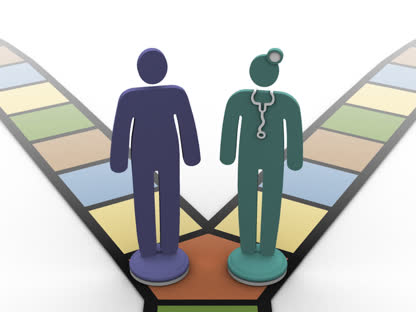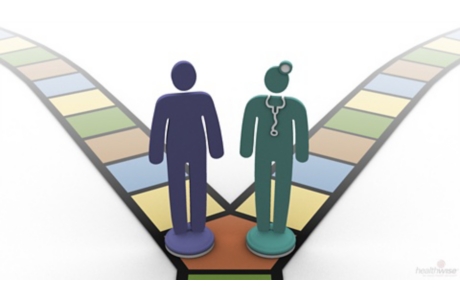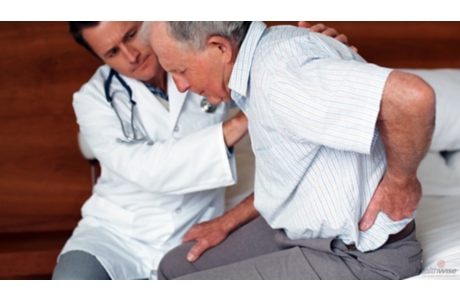Decompressive Laminectomy for Lumbar Spinal Stenosis
Make an Appointment
Our team is here to help you make an appointment with the specialists that you need.
Decompressive Laminectomy for Lumbar Spinal Stenosis
Surgery Overview
Laminectomy is the most common type of surgery done to treat lumbar (low back) spinal stenosis. This is also called decompression surgery. This surgery is done to relieve pressure on the spinal nerve roots caused by age-related changes in the spine. It also is done to treat other conditions, such as injuries to the spine, herniated discs, or tumors. In many cases, reducing pressure on the nerve roots can relieve pain and allow you to resume normal daily activities.
Laminectomy removes bone (parts of the vertebrae) and/or thickened tissue that is narrowing the spinal canal and squeezing the spinal nerve roots. A surgeon cuts into your back to do the surgery.
In some cases, spinal fusion (arthrodesis) may be done at the same time to help stabilize sections of the spine. Spinal fusion is major surgery, usually lasting several hours.
What To Expect
Depending on your health and the extent of the surgery, it may take 2 to 4 weeks to return to work. But if your job requires physical labor, it may take 4 to 8 weeks.
Why It Is Done
Surgery for spinal stenosis is considered when:
- Severe symptoms restrict normal daily activities and become more severe than you can manage.
- Nonsurgical treatment does not relieve pain, and severe nerve compression symptoms of spinal stenosis (such as numbness or weakness) are getting worse.
- You are less able to control your bladder or bowels than usual.
- You notice sudden changes in your ability to walk in a steady way, or your movement becomes clumsy.
The decision to have surgery is not based on imaging test results alone. Even if the results of imaging tests show increased pressure on the spinal cord and spinal nerve roots, the decision to have surgery also depends on how severe your symptoms are and whether you're able to do normal daily activities.
In some cases, spinal fusion will be done at the same time to stabilize the spine. Spinal fusion might make it easier for you to move around (improve function) and relieve your pain. It can also help keep the bones from moving into positions that squeeze the spinal canal and put pressure on the spinal nerve roots.
Learn more
Watch
How Well It Works
Surgery for spinal stenosis usually is elective. But the doctor might recommend it if symptoms can't be relieved with nonsurgical treatment.
Research shows that:
- If nonsurgical treatments don't work well enough, surgery might help to relieve pain and improve movement.footnote 1
- People who had surgery notice more improvement in their symptoms and can be more active than people who did not have surgery. This difference continues for at least 4 years after surgery.footnote 2
- After 10 years:
- People treated with surgery were as satisfied as those treated without surgery.
- People who had surgery were generally able to be more active and had less leg pain than those who had nonsurgical treatment.footnote 3
- Surgery appears to be more effective for leg pain than for back pain, but it may help both.footnote 4
But symptoms may return after several years. Some people may need a second surgery if:
- Spinal stenosis develops in another area of the spine.
- The earlier surgery hasn't controlled symptoms.
- The spine becomes unstable, or fusion does not occur.
- Regrowth of tissue (lamina) presses on the spinal cord or spinal nerve roots.
Spinal fusion may be done at the same time as laminectomy. Spinal fusion may help to stabilize sections of the spine that have been treated with laminectomy. In general, fusion is only done if an area of the spine is unstable. This means that the bones of the spine (vertebrae) move too much or don't move in a normal way. This extra movement causes wear and tear on the nerves or other soft tissues, leading to irritation and pain. The goal of fusion is to keep the damaged bones in the spine from moving so that the soft tissues are protected.
Risks
Complications from spinal stenosis surgery may depend on what other medical problems you have and how severe your spinal problem is. Also, all surgery poses risks of complications. These complications may be more serious in an older adult.
Possible complications include:
- Problems from anesthesia.
- A deep infection in the surgical wound.
- A skin infection.
- Blood clots.
- An unstable spine.
- Nerve injury, including weakness, numbness, or paralysis.
- Tears in the fibrous tissue that covers the spinal cord and the nerve near the spinal cord. This sometimes requires a second surgery.
- Trouble passing urine, or loss of bladder or bowel control.
- Long-term (chronic) pain, which develops after surgery in some cases.
- Death from problems caused by surgery. But this is rare.
If you have diabetes or circulation problems or if you smoke, you may be at greater risk for complications.
References
Citations
- Weinstein JN, et al. (2008). Surgical versus nonsurgical therapy for lumbar spinal stenosis. New England Journal of Medicine, 358(8): 794–810.
- Weinstein JN, et al. (2010). Surgical versus nonoperative treatment for lumbar spinal stenosis four-year results of the Spine Patient Outcomes Research Trial. Spine, 35(14): 1329–1338.
- Lurie JD, et al. (2015). Long-term outcomes of lumbar spinal stenosis. Spine, 40(2): 63-76. DOI: 10.1097/BRS.0000000000000731. Accessed March 21, 2017.
- Pearson A, et al. (2011). Predominant leg pain is associated with better surgical outcomes in degenerative spondylolistheses and spinal stenosis: Results from the Spine Patient Outcomes Research Trial (SPORT). Spine, 36(3): 219–229.
Credits
Current as of: July 31, 2024
Author: Ignite Healthwise, LLC Staff
Clinical Review Board
All Healthwise education is reviewed by a team that includes physicians, nurses, advanced practitioners, registered dieticians, and other healthcare professionals.
Current as of: July 31, 2024
Author: Ignite Healthwise, LLC Staff
Clinical Review Board
All Healthwise education is reviewed by a team that includes physicians, nurses, advanced practitioners, registered dieticians, and other healthcare professionals.
This information does not replace the advice of a doctor. Ignite Healthwise, LLC, disclaims any warranty or liability for your use of this information. Your use of this information means that you agree to the Terms of Use. Learn how we develop our content.
To learn more about Ignite Healthwise, LLC, visit webmdignite.com.
© 2024-2025 Ignite Healthwise, LLC.
This information does not replace the advice of a doctor. Ignite Healthwise, LLC, disclaims any warranty or liability for your use of this information. Your use of this information means that you agree to the Terms of Use. Learn how we develop our content.










